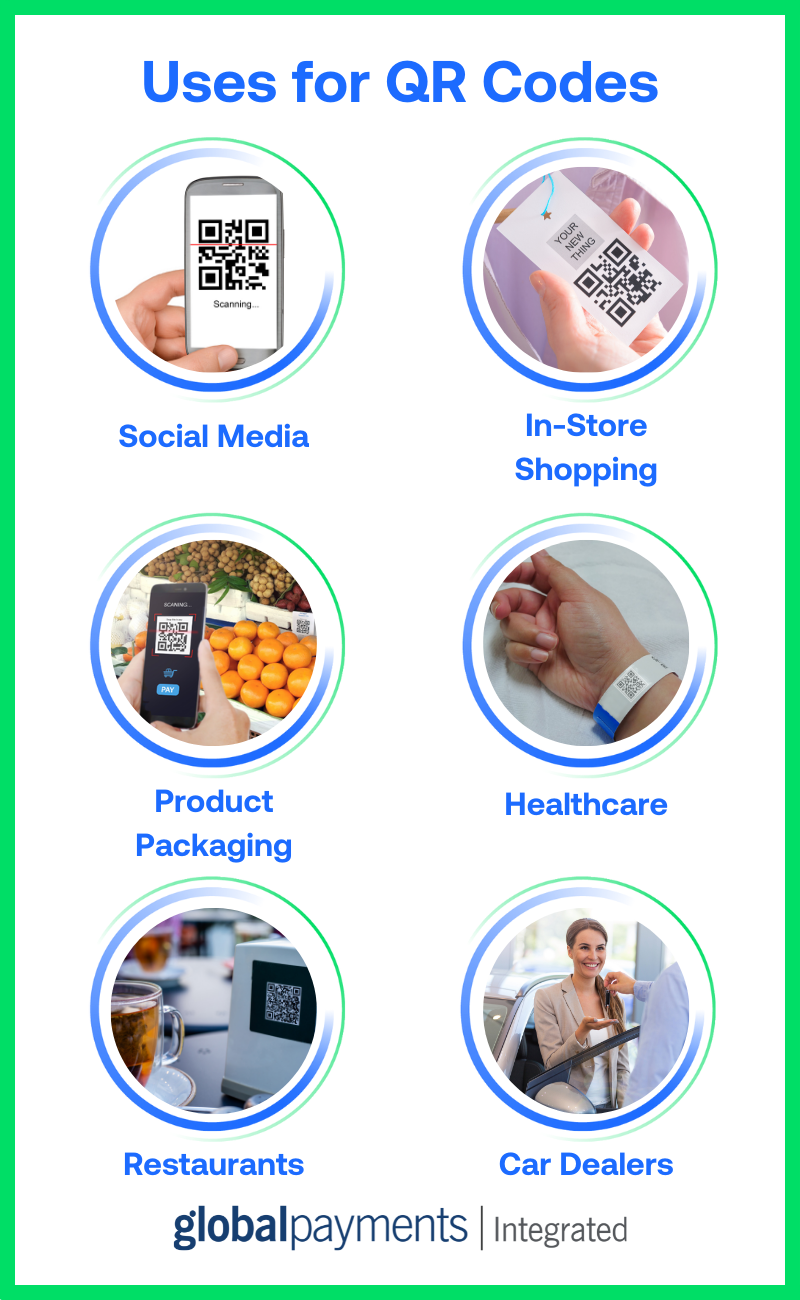Editor’s Note: This blog entry was originally published on March 7, 2018, and was updated on September 7, 2021.
What are QR Codes?
A QR, or Quick Response, code is a two-dimensional code usually formatted as a pattern of black squares in a grid with a white background. QR codes are similar to barcodes; however, they can store a larger amount of data and can be scanned from both paper and screen. Devices such as smartphone cameras are used to read the data in a QR code. While mobile phone users originally had to download a dedicated app to read them, a QR code scanner is now built into the camera app on iPhones and Android phones.
How Do QR Codes Work?
When a code is scanned, the software on a smartphone decodes the data embedded in the code and converts it into a string of characters. Those characters contain a command for the phone to complete an action, such as confirming a payment or opening a link in an Internet browser.
Uses for QR Codes
QR codes were first created in 1994 to track vehicles and parts in the automobile manufacturing industry. Since then, the technology has expanded to a number of different uses. A few of these uses include:
Social Media
Many companies use these codes as an easy way for consumers to follow them on social media. Instagram, for example, offers custom QR codes called “Name Tags” for each account. Users can scan the Name Tag and be taken directly to a company’s profile, rather than searching for it.
Personalization of the In-Store Shopping Experience
Nike’s flagship store was designed around the use of QR codes in the Nike app. It offers features such as “Shop the Look,” where customers can scan a QR code on a mannequin to have the outfit sent directly to a fitting room for them.
Informative Product Packaging
The codes are used on product packaging to allow customers to access additional product information, such as detailed ingredient lists.
Healthcare
Many hospitals are now featuring these codes on patient’s hospital bracelets, allowing medical staff to access the patient’s health record, current medication list, allergies, and more information all in one place.
Customer/Patient Check-In
QR codes can now be used to offer a more streamlined and touchless self-check-in process for customers or patients. This provides a modern, digital experience for customers, and allows them to easily verify and update information upon check-in.
Car Dealerships
Some car dealerships display QR codes on their vehicles’ window stickers. Scanning the code brings up the vehicle details for the potential buyer.
Coupons
Customers often forget or misplace their paper coupons. QR code coupons can help. Customers simply scan the code on a sign or brochure and are instantly taken to the offer, or even to an online storefront with the offer automatically applied.
Restaurants
These codes are now seeing widespread use in restaurants. In addition to incorporating them into the payment process, restaurants are now also using the codes to allow patrons to pull up a contactless menu on their smartphones.

QR Code Payments
In the United States, QR codes were slow to catch on, and were initially used mainly for information sharing such as the examples above. NFC technology instead became the popular choice for contactless payments. However, in other countries, QR codes quickly began to be used for payments. For example, in China, they were used to process an estimated $1.65 trillion in purchases in 2016 alone.
While NFC technology will likely continue to be a popular form of contactless payments used in the United States, some companies are now incorporating QR codes into their business model through store apps.
For example, some coffee companies allow customers to place mobile orders in their app. Customers then pick up their order in-store and are presented with a QR code that they scan to pay. Some retailers combine coupons, gift cards, loyalty cards, and more into one app QR code.
Recent Increase in Usage
The 2020 pandemic accelerated the use of mobile payments, including the adoption of QR code technology. With the increased consumer demand for touch-free or contactless transactions, the codes saw a resurgence and are now commonly found in restaurants, retail stores, doctors’ offices, and other businesses.
According to Juniper Research, by 2022, 5.3 billion QR code coupons will be redeemed by smartphones and 1 billion smartphones will access QR codes.
Conclusion
Research indicates QR codes will continue to find widespread and varied use in the United States. Statista forecast that 11 million households in the US alone would scan a QR code in the year 2020 (up from an estimated 9.76 million scans in 2018) - and those predictions were made before the pandemic hit. With consumers having expressed their desire to continue using contactless and other digital technology as a payment method even after the pandemic, it looks like the usage of QR codes will continue to increase.
